
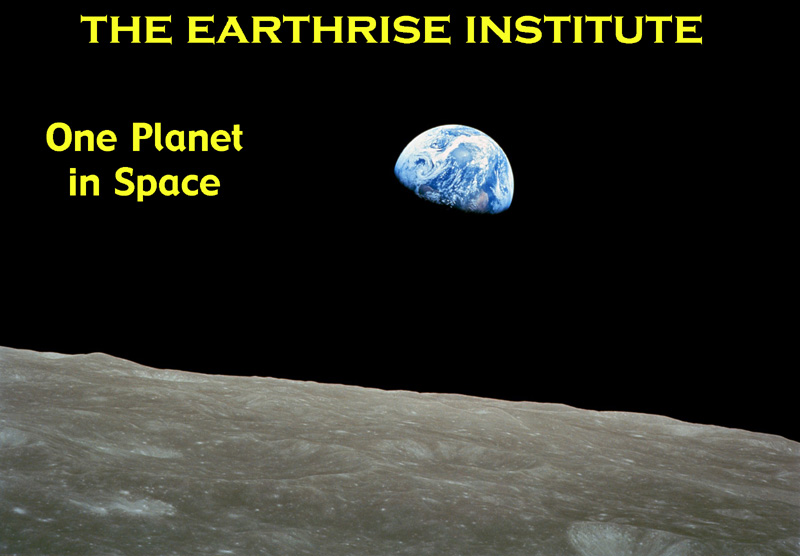
COMET OF THE WEEK
WEEK 52: DECEMBER 20-26
COMET LOVEJOY C/2011 W3
Perihelion: 2011 December 16.08, q = 0.006 AU
The comet brightened steadily as it approached perihelion, and was around 11th magnitude, and exhibiting a distinct tail, near the end of the first week of December, although shortly thereafter it disappeared into morning twilight. It appeared in the field-of-view of the LASCO C3 coronagraph aboard the SOlar and Heliospheric Observatory (SOHO) spacecraft on December 14, already brighter than any previous sungrazer had appeared in LASCO images, although a lot of uncertainty remained as to whether or not it would survive perihelion passage. After perihelion, however, it re-emerged intact from behind the coronagraph’s occulting disk, and was already in the process of growing a new tail, having shed its old one as it rounded the sun. Around this time it was observed by several sun-studying spacecraft, including NASA’s Solar Dynamics Observatory (SDO) and JAXA’s Hinode probe, many of these observations being unique in the history of cometary astronomy. A handful of observers around the world succeeded in viewing the comet during daytime as an object of around magnitude -2.
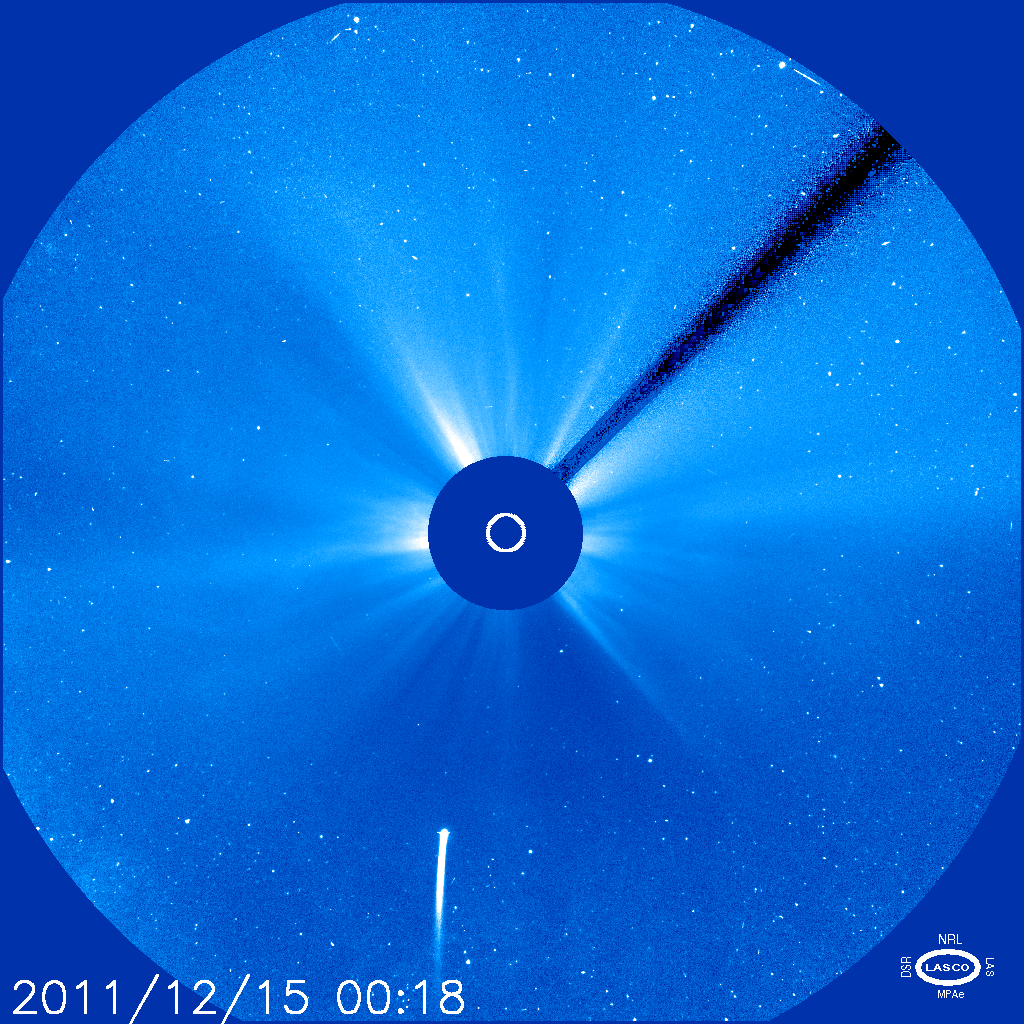
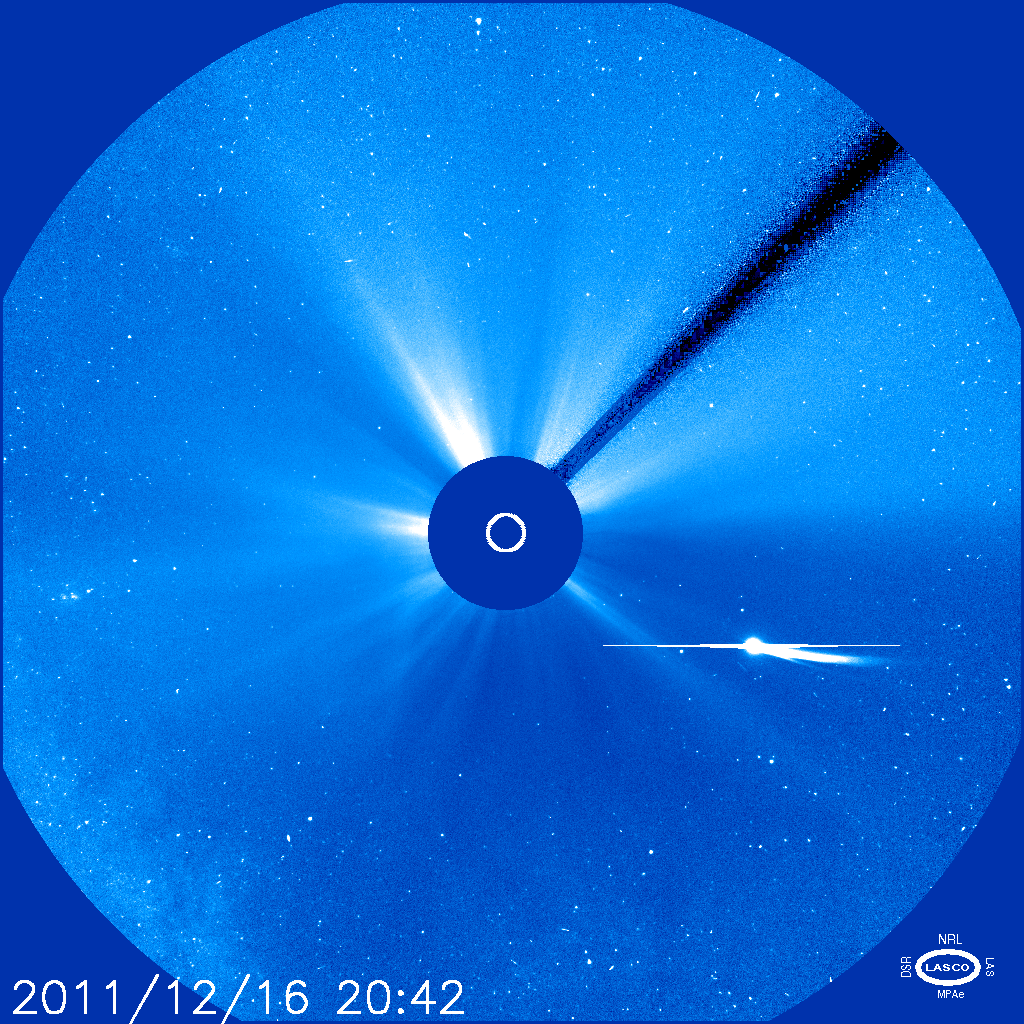 LASCO C3 images from the SOHO spacecraft of Comet Lovejoy before and after perihelion passage. Left: December 15, 2011, a little over 25 hours before perihelion. Right: December 16, 2011, slightly less than 19 hours after perihelion. The intact comet with its bright new tail is in the lower right, while a ghostly remnant of its former tail can be seen hanging from the lower left side of the occulting disk. Both images courtesy NASA/ESA.
LASCO C3 images from the SOHO spacecraft of Comet Lovejoy before and after perihelion passage. Left: December 15, 2011, a little over 25 hours before perihelion. Right: December 16, 2011, slightly less than 19 hours after perihelion. The intact comet with its bright new tail is in the lower right, while a ghostly remnant of its former tail can be seen hanging from the lower left side of the occulting disk. Both images courtesy NASA/ESA.
By around the morning of the 19th observers in the southern hemisphere began reporting observations of Comet Lovejoy in twilight, with a brightness close to magnitude 0. Within a couple of days it started to become visible in a dark sky, as a spectacular object with a bright, long dust tail in excess of 30 degrees. It faded fairly rapidly, from about 2nd magnitude on December 21 to around 4th magnitude by December 24 and to between 5th and 6th magnitude by the end of 2011.
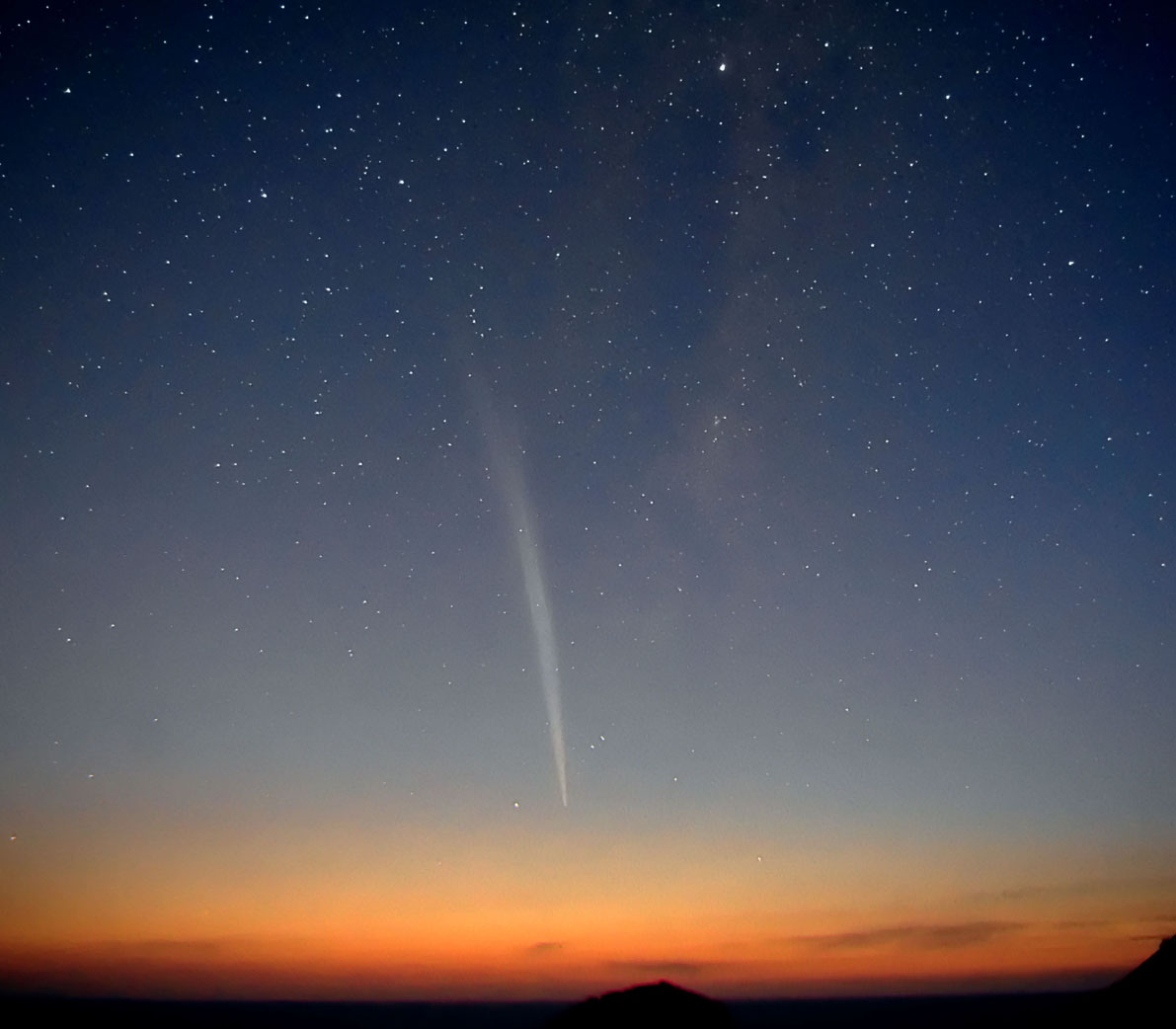
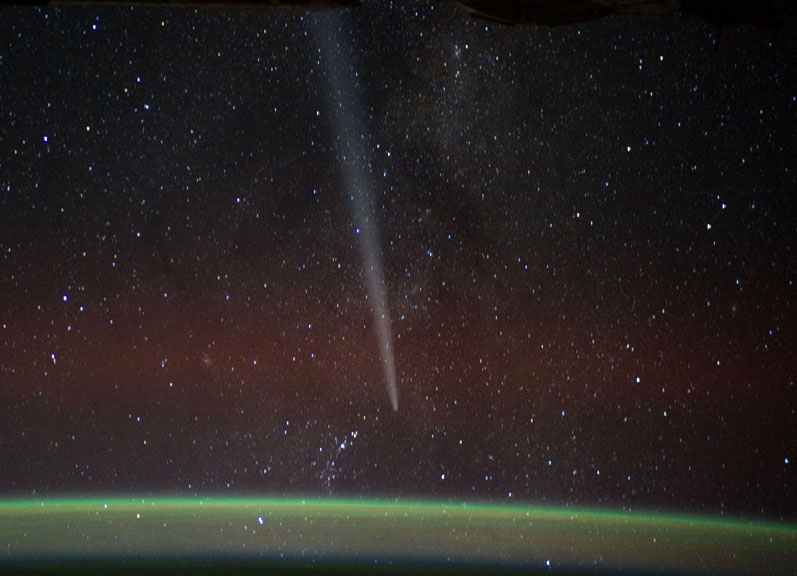 LEFT: Comet Lovejoy on the morning of December 21, 2011, from Cape Schanck, Victoria. Courtesy Paul Albers. RIGHT: Comet Lovejoy as photographed from the International Space Station on December 26, 2011, by Expedition 30 Commander Dan Burbank. Courtesy NASA.
LEFT: Comet Lovejoy on the morning of December 21, 2011, from Cape Schanck, Victoria. Courtesy Paul Albers. RIGHT: Comet Lovejoy as photographed from the International Space Station on December 26, 2011, by Expedition 30 Commander Dan Burbank. Courtesy NASA.
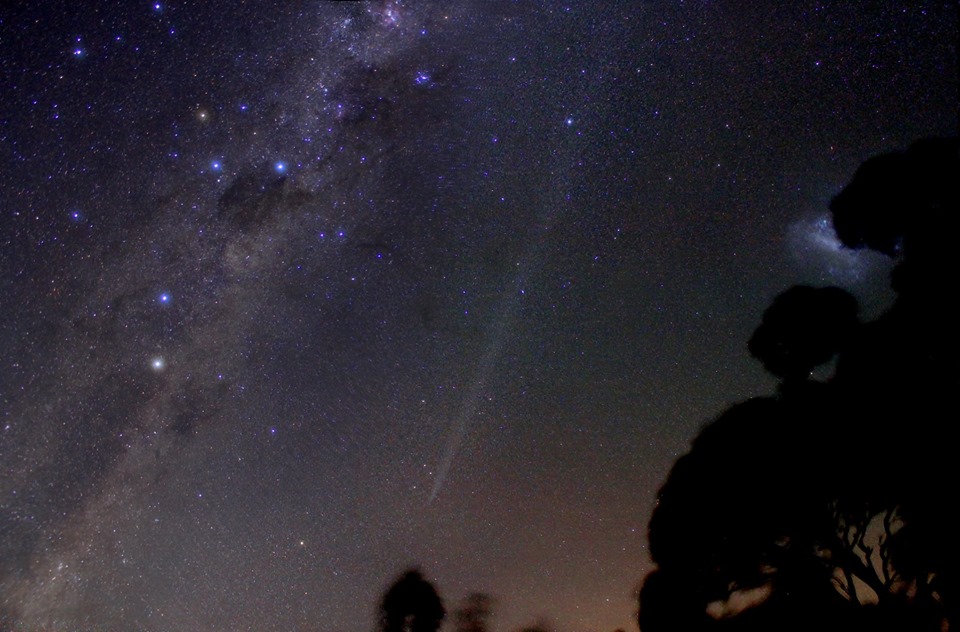
As we wait for future members of the Sekanina-Chodas “cluster” of Kreutz sungrazers to arrive, I hope we don’t have to wait too long. Furthermore, especially since Comet Lovejoy was a “Great Comet” for observers in the southern hemisphere but was completely inaccessible from the northern hemisphere for almost the entire time of its passage through the inner solar system, I hope that at least one of these future sungrazers will pass through perihelion at a time of the year – ideally, in the September/October timeframe – that will allow those of us who reside north of the Equator to enjoy the show put on by one of these magnificent objects.
ADDED “IN PRESS:” While it certainly isn’t a member of the incoming Sekanina-Chodas “cluster,” a small Kreutz sungrazer (designated C/2020 X3) was photographed during the total solar eclipse this past December 14. It had been discovered the day before the eclipse (December 13) in images taken with the LASCO C3 coronagraph aboard SOHO by researcher Worachate Boonplod in Thailand, and during totality was roughly 6½ hours away from perihelion and visible in C2 images located approximately three degrees southeast of the sun. A German astronomer, Andreas Moeller, successfully imaged the comet from Neuquen, Argentina.
This is the second time that a SOHO Kreutz sungrazer has been successfully imaged during a total solar eclipse; as discussed in the “Special Topics” presentation on “Solar Eclipse Comets,” Comet C/2008 O1 was imaged during the eclipse on August 1 of that year. I remain hopeful that I will be successful in both imaging and visually observing a Kreutz sungrazer during the eclipse on April 8, 2024.
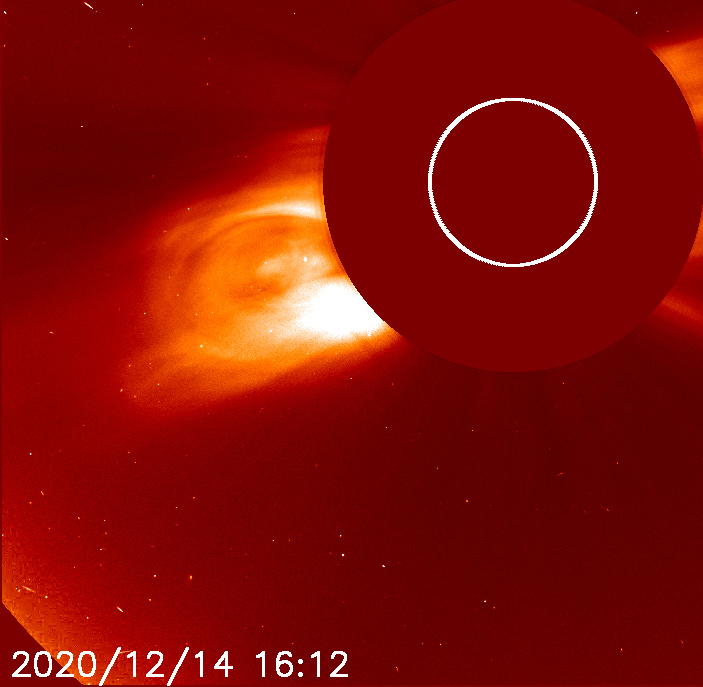
 Comet SOHO C/2020 X3 at the time of totality during the total solar eclipse on December 14, 2020. Left: The southeastern quadrant of the LASCO C2 image at the approximate time of totality from Argentina. The comet is above the slash between the “12” and the “14,” and a short thin tail can be seen extending to the lower left. Courtesy NASA/ESA. Right: Image taken by Andreas Moeller from Neuquen, Argentina. This is cropped from the original image, and I have rotated it 180 degrees to match the orientation in the LASCO image. Courtesy Andreas Moeller (Arbeitskreis Meteore e.V.).
Comet SOHO C/2020 X3 at the time of totality during the total solar eclipse on December 14, 2020. Left: The southeastern quadrant of the LASCO C2 image at the approximate time of totality from Argentina. The comet is above the slash between the “12” and the “14,” and a short thin tail can be seen extending to the lower left. Courtesy NASA/ESA. Right: Image taken by Andreas Moeller from Neuquen, Argentina. This is cropped from the original image, and I have rotated it 180 degrees to match the orientation in the LASCO image. Courtesy Andreas Moeller (Arbeitskreis Meteore e.V.).
“Comet of the Week” archive
Ice and Stone 2020 home page
Earthrise Institute home page